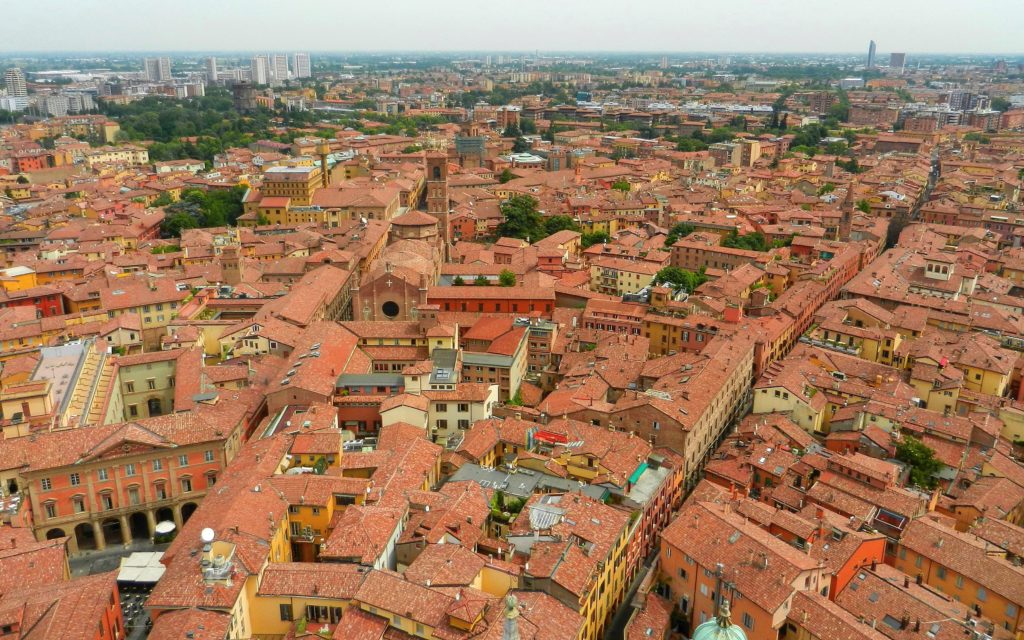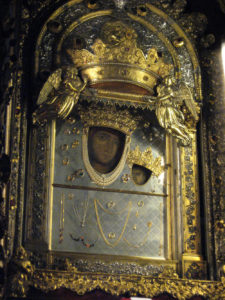Bologna is known by many names because it’s a city with a high reputation. It is called “La Grassa” (the fat one) for its famous rich and fatty cuisine. A view from one of its many towers will show you why “La Rossa” (the red one) perfectly describes the earthy hues of Bologna. The nickname “La Dotta” (the learned one) tips a cap to the University of Bologna, the oldest operating university in the world. With all of this acclaim and more, Bologna has a lot to be proud of.
As per usual, Ashleigh and I had booked the cheapest room possible through airbnb as a home base for our Bologna tours. We arrived in the evening and headed straight for our apartment in Bolognina (little Bologna), a neighbourhood just north of the city. Our punk rocker roommate was friendly enough, and we shared a queen-sized bunk-bed that he had cleverly built himself to save space (we got lower bunk). Dumping our unwieldy luggage, we hit the town to do a bit of night exploring and hopefully find some delicious Bolognese food.
From what I remember, we managed to find our way to the University of Bologna on the east side of town, and it was not what I expected. The area of town all around the campus was graffitied and grungy. Punk and goth-styled students were milling about in groups, smoking, drinking and listening to heavy metal. For some reason I thought the oldest university in the world would be all class but instead it was all sass and attitude. I later realised that the old university was nowhere near the new one.
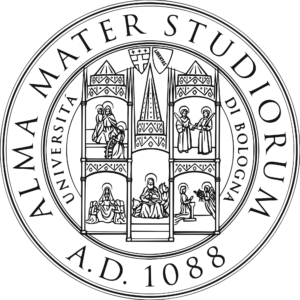 Inside the centre of the historic district, the Archiginnasio is the oldest original university building in Bologna. Though the Archiginnasio centre was built in the 16th century, the University of Bologna was founded as early as 1088. It may not be the oldest educational institution of all time, but UNIBO lays claim to the origin of the term “University”. Universitas magistrorum et scholarium is Latin for “community of teachers and scholars”, a place of learning that caught on not just in Italy but around the world. The modern University of Bologna still thrives in the Palazzo Poggi as well as 11 other schools around Italy, including one in Buenos Aires.
Inside the centre of the historic district, the Archiginnasio is the oldest original university building in Bologna. Though the Archiginnasio centre was built in the 16th century, the University of Bologna was founded as early as 1088. It may not be the oldest educational institution of all time, but UNIBO lays claim to the origin of the term “University”. Universitas magistrorum et scholarium is Latin for “community of teachers and scholars”, a place of learning that caught on not just in Italy but around the world. The modern University of Bologna still thrives in the Palazzo Poggi as well as 11 other schools around Italy, including one in Buenos Aires.
We wandered aimlessly for a few hours, spying mighty medieval towers, grand plazas and majestic fountains. The night felt old (at least for us) and grabbing a quick snack from a local pizzeria we turned in for the evening. The tiny part of Bologna we had glimpsed so far made us excited for tomorrow’s adventures.
The first thing I noticed in the harsh, beating sun of the next morning were all the porticoes. God bless the city planners for implementing these stylish shelters from the sun. 38 kilometre lengths of permanent canopies were built a 1000 years ago throughout Bologna’s historic district, still providing shade for pedestrians centuries later.
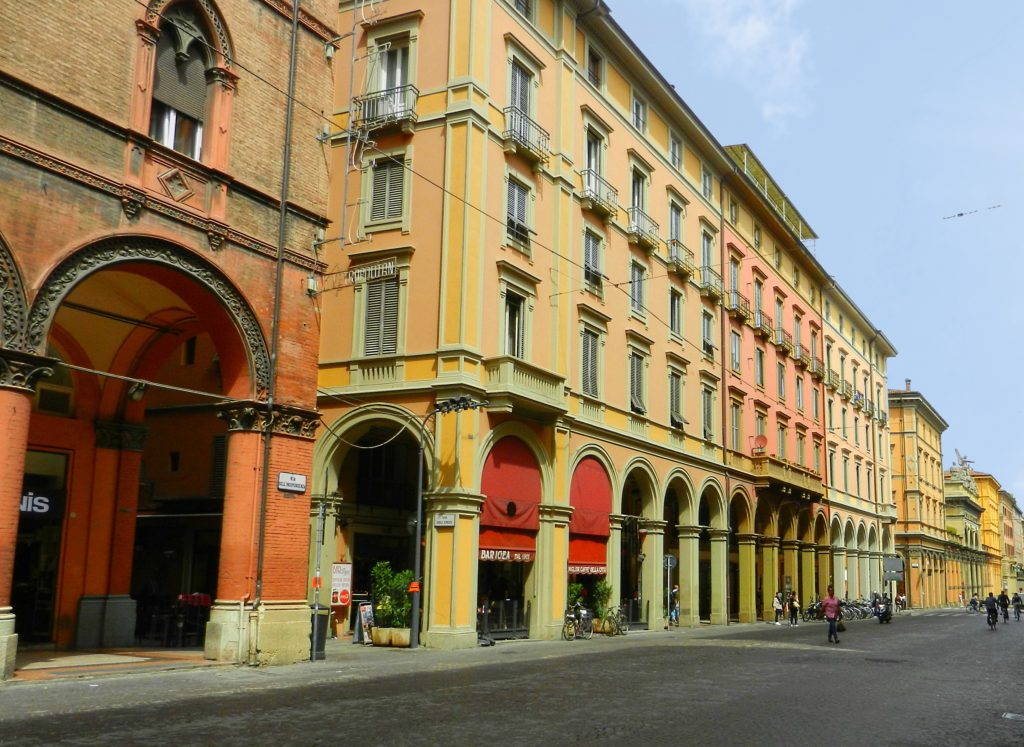
Following along these shaded pathways, we walked into the Quadrilatero, the old market district of Bologna. In this section of the city you can find all the rich foods Bologna is known for. Market stalls line the Quadrilatero’s cramped streets selling vegetables and merchandise, while the salumerie shops offer cold cuts, fresh pastas and rare cheeses. When in Italy don’t pass up the fresh pasta; it’s cheap, and ten times tastier then your typical dried macaroni.
Our next stop had to be one of the many rectangular, medieval skyscrapers we had been seeing all over town. If you think the leaning tower of Pisa is one of a kind, let me tell you, these Bolognese towers don’t look structurally sound either. Nevertheless, we decided to brave the creaky, spiralling wooden staircase up to the top of the tallest tower to get awesome views of red-hued Bologna. There are around 20 of these magnificent, brick towers all throughout Bologna’s old town, a mere collection compared to the array that stood in the middle ages. In the 12th and 13th century, up to 180 of these building were constructed and no one is quite sure why. They may have been used as a form of defence between Italian nobles, or it was just another way to show off (perhaps they were compensating for something). It could take up to ten years to build one of these structures so, whatever the reason, let’s hope it was a good one. Once the fad of owning your own tower ceased, most of them were demolished to make room for “downtown revitalisation”. The few that stand today have been turned into houses, hotels, or convenient viewpoints for tourists.
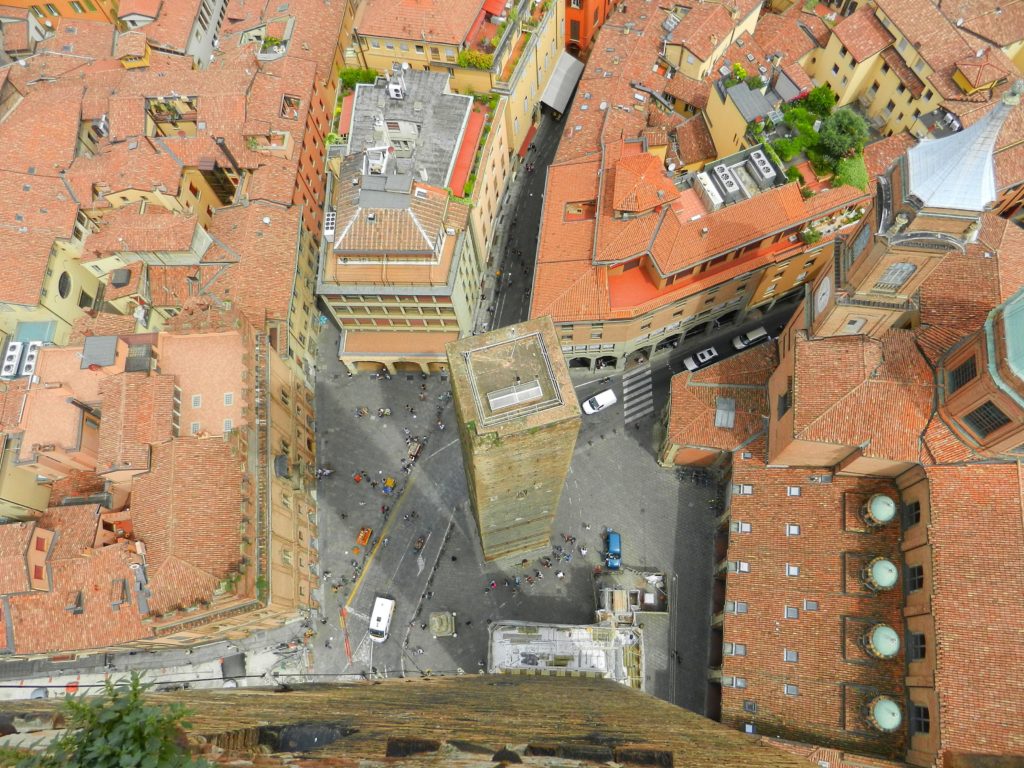
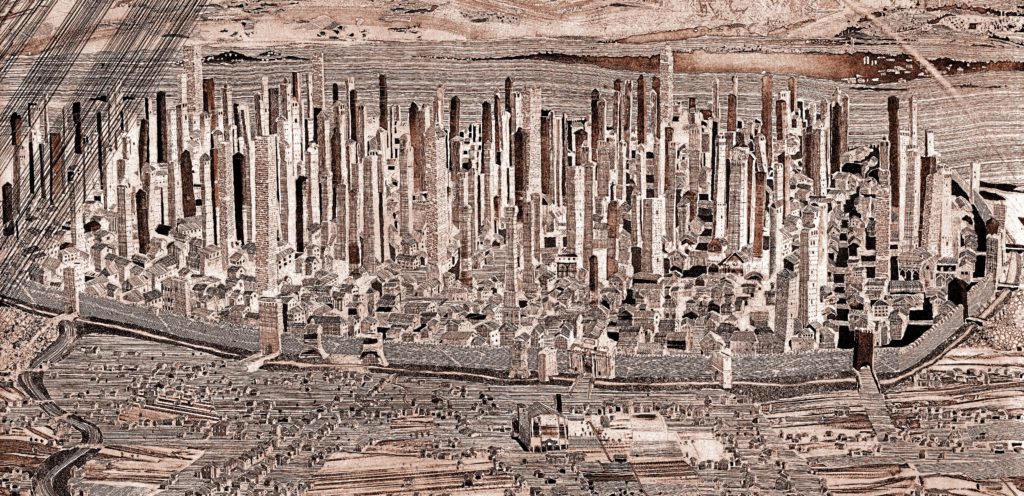
While wandering Bologna, you will eventually end up in the main Piazza Maggiore, just as we did. This beautiful plaza is flanked by marvellous buildings, including the colossal Basilica di San Petronio. Dominating Piazza Maggiore, the Basilica holds 22 chapels and is the 10th largest church in the world (by volume). The marble facade, started in 1538, was never completed and only creeps up halfway, revealing the Basilica’s brick construction. Despite its shortcomings, the multi-coloured marbles and sculptures are impressive. The interior of San Petronio’s Basilica is simple yet elegant, with red pillars stretching into the vaulted ceiling like a tree canopy. We noticed, embedded in the exquisite, mosaic floor was a meridian line, designed by an astronomer from the university in order to determine the length of each solar year.
Besides the Basilica di san Petronio, the main square of Maggiore is surrounded by four “Palazzos” (palaces) of great importance. West is the Palazzo d’Accursio, the former city hall and now a civic art museum. Palazzo dei Notai, south west of the piazza, was once a notaries’ guild built in 1278. East is the Palazzo dei Banchi, a renaissance styled palace and former banking centre. To the north of Maggiore is Palazzo del Podestà, a former police and justice office built in 1200. Directly behind and connected to the Palazzo del Podestà is the Palazzo Re Enzo, built after Podesta as the “new palace” and residence of the King. Too many palaces in my opinion, but they are each uniquely beautiful and open for visitors.
Although we were already exhausted from a day of touring, there was still one journey left to make. On top of a forested hill, overlooking the city, is the Sanctuary of the Madonna di San Luca. A chapel has existed upon Monte della Guardia for one thousand years, but the one you see today was only built in 1723. It is said that, in the 12th century, a pilgrim from the Byzantine empire brought a sacred icon from the Hagia Sophia in Constantinople to Bologna. This icon of the virgin Mary and Jesus was said to have been painted by Luke the Evangelist himself, so it was very precious. The bishop of Bologna assigned the icon to the chapel on Guardia Hill and it has been guarded there ever since. A 3.4 kilometre stretch of the world’s longest set of porticoes wind down the hillside from the chapel to the medieval gate Porta Saragozza. The porticoes, which took 100 years to build, were designed to shield pilgrims from the elements as they made their journey up to the holy icon. We have enjoyed several other European pilgrimages in the past, like Saint Erik’s Pilgrimage in Uppsala, even Mostar’s Hum Hill, and we loved every minute of the hike up to the Madonna di San Luca. There isn’t a great a view of Bologna from the top of Gaurdia hill, but the rolling, Italian countryside is breathtaking. We spent the rest of the afternoon at the summit, exploring the chapel and gazing out at the scenery as the sun began to set. It was a long walk back to our apartment, but we were very satisfied with our time in Bologna.
Bologna is a city tourists often forget, but it has a lot to offer. It contains Europe’s second largest historical centre filled with magnificent Medieval, Baroque, and Renaissance monuments. It is the inventor of world-renowned pastas and sauces, rich cuisine that cause you to drool at the mere thought of them. The original University was founded in Bologna, hosting some of the most prestigious scholars of history and still thriving to this day. This is why Bologna is known by many names; it offers the best of everything.
